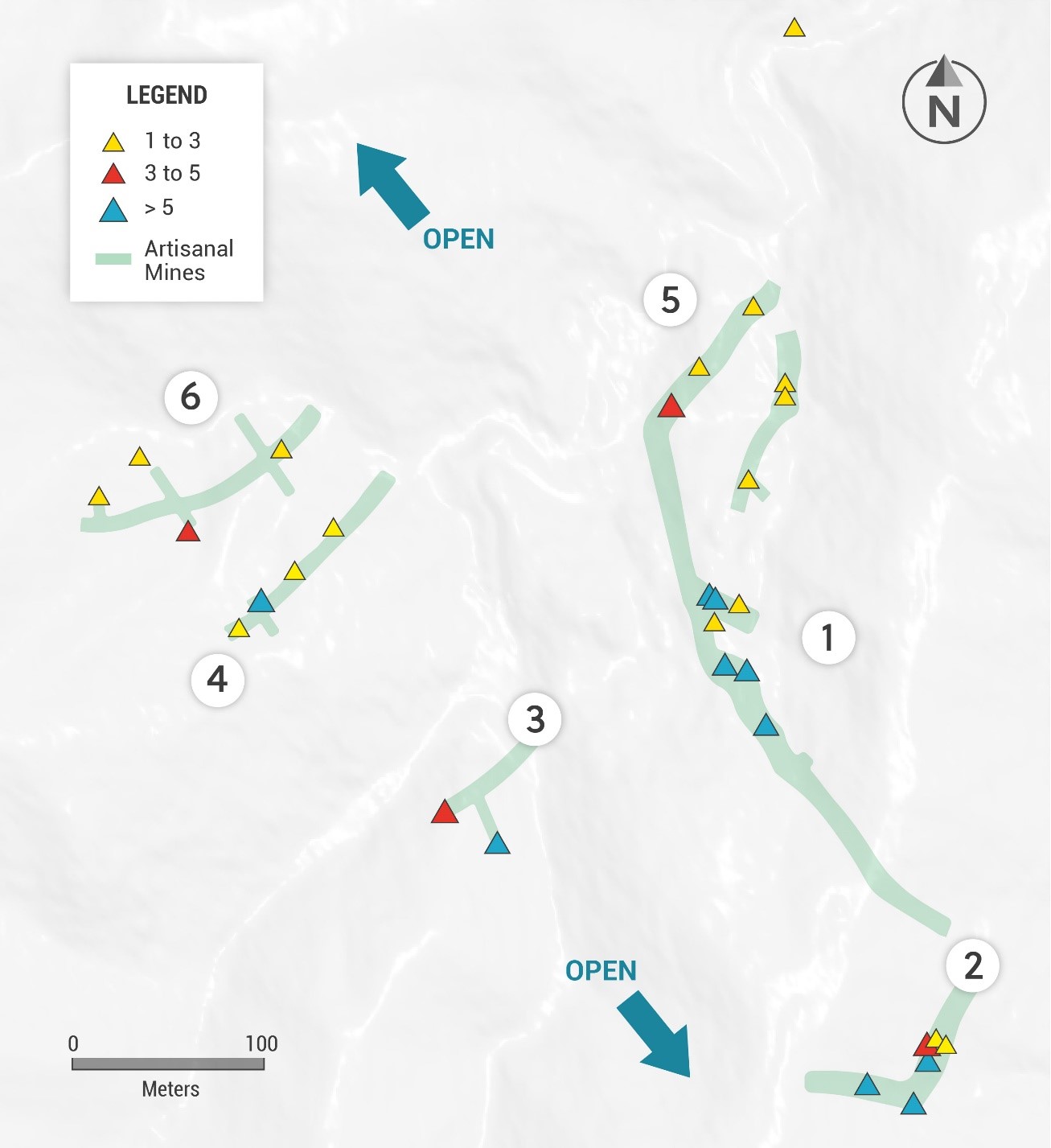
Yesterday, Collective Mining (TSXV:CNL) announced an update for the Guayabales Project in Caldas, Colombia. The mine is just northwest of Aris Gold’s Marmato gold mine which has nearly 2.0 million ounces of gold and 4.35 million ounces of silver. According to the recent update at its Olympus target, the company has found many precious mineralized metals such as gold-copper-molybdenum porphyries. The site is also believed to contain high-grade precious base metal vein systems that enhance the porphyries, making them more valuable.
CEO Ari Sussman Eyes More Targets for Future Drill Testing
This project has been underway for some time now, and is helmed by former executives of the now famous Continental Gold mining company. One of these members was Ari Sussman, who currently serves as the Executive Chairman on the Board of Collective Mining Inc. His famous Buritica mining project a couple years ago was incredibly fruitful in Columbia before selling the company to Zijin mining for approximately $2 billion. Today, that mine is one of the most profitable on the planet and Sussman has similar hopes for the Guayabales mining site. He commented on the Olympus target:
“We are very excited about the Olympus target due to its multiple mineralization styles and enrichment of porphyry mineralization by a high-grade vein overprint. Although underground exposures to channel samples were limited due to extensive small-scale mining-related historical timber support, significant high-grades of both gold and silver were encountered over an area measuring 600 x 600 metres with mineralization remaining open in all directions. Work to date at Olympus clearly indicates that there will be multiple targets ready for drill testing in the near future,” commented Ari Sussman, Executive Chairman.
Highlights
The Company has received results from shallow underground channel sampling at its Olympus target within the Guayabales Project. The Olympus target is a NW trending mineralized corridor located in a porphyry intrusive. Gold and silver mineralization is hosted within multiple styles that include high grade vein, porphyry veinlet, breccia and disseminated systems.
Ten old mine adits have been sampled to date with assay results for the initial six adits reported herein. In all cases, channel sampling was limited to infrequent underground exposures which were not covered by historical post-mining timber support with highlight results as follows:
o 46.5 g/t gold equivalent over 1 metre (19.1 g/t Au and 1,919 g/t Ag);
o 39.0 g/t gold equivalent over 2.7 metres (33 g/t Au and 421 g/t Ag);
o 16.3 g/t gold equivalent over 1 metre (9.7 g/t Au and 464 g/t Ag);
o 20.8 g/t gold equivalent over 0.9 metre (20.7 g/t Au and 9 g/t Ag);
o 13.8 g/t gold equivalent over 1.7 metres (9.3 g/t Au and 314 g/t Ag) and;
o 11.8 g/t gold equivalent over 1 metre (6.1 g/t Au and 399 g/t Ag).
- Porphyry A and B veinlets in sheeted and stockwork zones and associated with disseminated sulphides returned 19 values ranging from 4.7 g/t AuEq to 1.1 g/t AuEq from widths of 2.0 metres to 0.3 metres in available underground exposures. This lower grade mineralization has been overprinted by the high-grade veins.
- The southernmost workings in the target area returned 8.6 g/t AuEq and 8.2 g/t AuEq from a mineralized breccia zone with clasts and matrix of massive sulphide material.
- The Olympus mineralized corridor has been mapped over a width of 600 metres and a NW strike of 600 metres. The target is open in all directions. The 600 metres wide corridor hosts 41 shallow underground adits.
- Underground sampling and surface mapping continues at the Olympus target area.
Table 1: Underground channel sampling at the Olympus Target

Source: Collective Mining
Figure 1

Figure 2

Figure 3

Figure 4




 Follow us on Twitter
Follow us on Twitter Become our facebook fan
Become our facebook fan











Comments are closed.